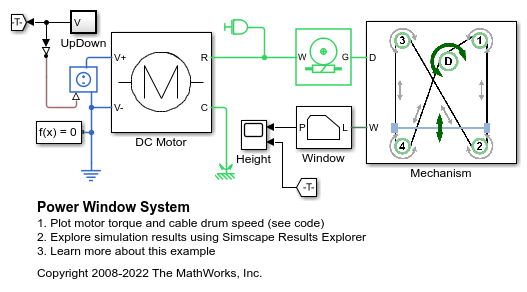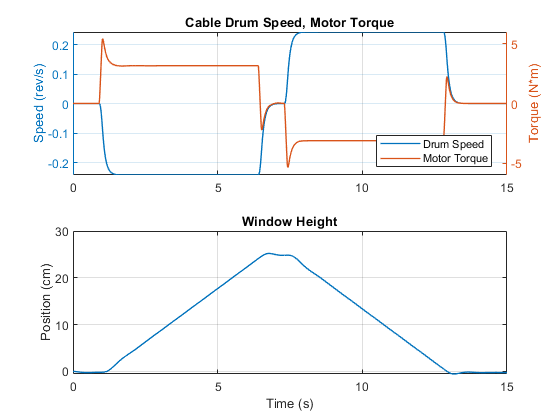Power Window System
This example shows a motor-driven power window system. A DC motor drives the power window mechanism via a self-locking worm gear with the ratio 1 : 50. The power window mechanism consists of a cable drum and four pulleys all connected by a cable. The window is attached to the cable at two points by the lift plate. This ensures both sides of the window move at the same speed and in the same direction, keeping the window level. The model also includes viscous friction in the guide rails.
Pre-tensioned cable segments are added between the pulleys. Each segment is simulated as a damper and preloaded spring using a Simscape™ Driveline™ Rope block. When modeling systems using pulleys and drums, it is important to remember that slack cables and belts cannot transmit force, hence the need for pre-tensioned cables and belts in the system.
Model

Mechanism Subsystem
The four rollers in the system are modeled using Belt Pulley blocks. They are connected via Rope blocks, which act as preloaded springs and dampers to ensure the cable is kept in tension. The power from the motor is transmitted to the cable assembly via the cable drum. The lift plate is modeled using a Lever block, and represents the two connection points of the window to the cable. The viscous friction in the guide rails is modeled using translational dampers.

Window Subsystem
The window is modeled as a mass subjected to a gravitational force. The Force Source is necessary to include the gravitational force. The hard stop represents the limit of travel in the guide rails.

DC Motor Subsystem
A simple DC motor is modeled using electrical and mechanical components.

Simulation Results from Simscape Logging
The plot below shows the torque required to raise and lower the window. The rotational speed of the cable drum is also shown.
